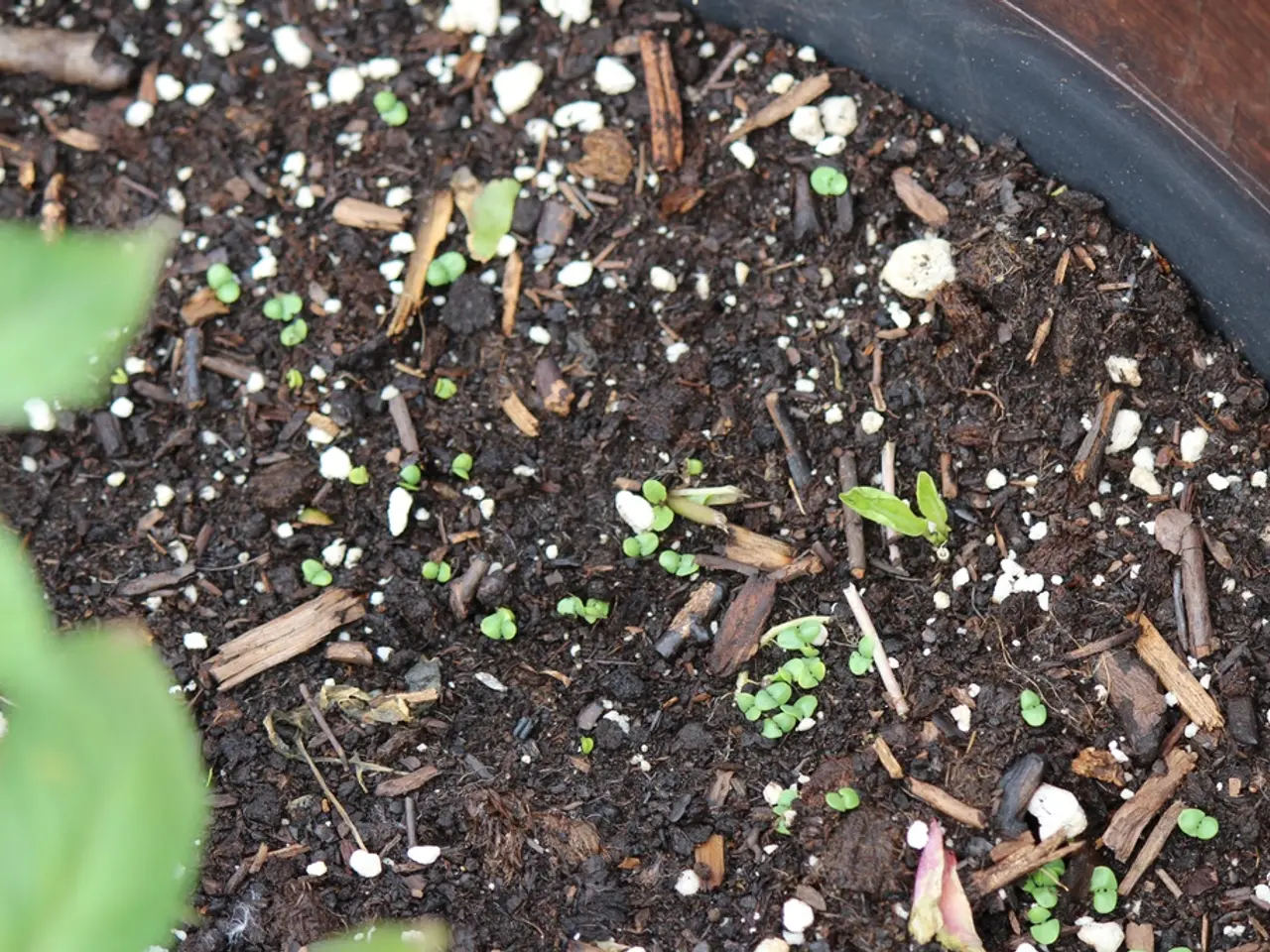"Exploration of Grey Buckwheat Sulfur: The Case for Dairymen's Attention - Uncovering the Reasons Behind Its Importance"
In the world of gardening, sulfur stands out as a versatile and eco-friendly solution to combat pests and diseases, while promoting plant health and yield. This article provides a practical guide on how to effectively use sulfur for managing powdery mildew and spider mites during the summer months.
## Concentration and Solution Preparation
When it comes to liquid sulfur products, commercial flowable sulfur fungicides like Drexel Suffa typically contain about 6 pounds of sulfur per gallon and are intended for dilution and application as sprays. For dry (wettable) sulfur, a common rate is 2–3 pounds per 100 gallons of water, but it's essential to check your specific product for exact recommendations.
## Application Rate for Dry Sulfur
For foliar spray, use approximately 2–3 pounds of wettable sulfur per 100 gallons of water for most crops, applied uniformly to foliage. If using sulfur dust, apply sufficient to lightly coat foliage but avoid excessive buildup, which can cause phytotoxicity.
## Optimal Temperature for Sulfur Application
Sulfur should be applied when daytime temperatures are below 90°F (32°C) and preferably when below 85°F (29°C) to prevent plant burn. High humidity and temperatures above these thresholds increase the risk of phytotoxicity. Apply sulfur sprays or dusts early in the morning or late in the afternoon when temperatures are cooler, avoiding midday heat. Do not apply sulfur if rain is expected within 24 hours, as it can be washed off before it becomes effective.
## Safe Practices
To minimize exposure to sulfur dust or spray, wear long sleeves, gloves, eye protection, and a mask or respirator. Never apply sulfur in the heat of the day or when temperatures are forecast to rise above recommended thresholds, as this can cause severe leaf burn. Avoid mixing sulfur with oils or certain other pesticides unless specified on the label, as incompatibilities can cause plant injury or reduced efficacy. Before widespread application, test sulfur on a small section of plants and observe for 48 hours for signs of phytotoxicity.
## Targeting Powdery Mildew and Spider Mites
Sulfur is highly effective against powdery mildew fungi. Apply at the first sign of disease or preventively in susceptible conditions. Sulfur acts as a miticide and can suppress mite populations when used as directed.
## Summary Table
| Method | Concentration/Rate | Application Timing | Safety Tips | |----------------|-------------------------------------------|---------------------------|-----------------------------------| | Liquid Sulfur | 1.3–5 gal/acre (brand dependent) | Early morning/late PM | <90°F, PPE, test for sensitivity | | Wettable Sulfur| 2–3 lb/100 gal water | Early morning/late PM | <90°F, PPE, test for sensitivity | | Sulfur Dust | Light dusting, avoid heavy buildup | Early morning/late PM | <90°F, PPE, test for sensitivity |
Following these guidelines will help maximize the effectiveness of sulfur while minimizing risks to plants and applicators in summer conditions.
Sulfur is not compatible with chemical preparations and alkaline solutions. When using dry sulfur, the application rate is 1-3 grams per square meter. Sulfur is used to acidify soil, which is important for crops that prefer acidic environments, such as blueberries, rhododendrons, and hydrangeas. However, it is not recommended to use sulfur on crops such as gooseberries, raspberries, cucurbits (including zucchinis and cucumbers). Sulfur is effective in combating powdery mildew, a fungal disease that affects a wide range of crops. Sulfur promotes improved nitrogen, phosphorus, and potassium absorption in plants, which directly affects their growth, development, and yield. Sulfur is an essential macronutrient for plants, participating in the synthesis of proteins, enzymes, vitamins, and chlorophyll. It's worth noting that a previously shared folk remedy can increase the yield of cucumbers and zucchini, but sulfur should not be used for these crops due to their incompatibility. Sulfur is low-toxic to humans and beneficial insects, making it suitable for eco-friendly and organic gardens.
Gardening and maintaining a healthy home-and-garden lifestyle can greatly benefit from the use of sulfur. For instance, wettable sulfur can be used in a foliar spray at a rate of 2-3 pounds per 100 gallons of water for most crops, helping combat powdery mildew and spider mites. Furthermore, sulfur is an effective solution for acidifying soil, particularly for crops like blueberries, rhododendrons, and hydrangeas that thrive in acidic environments.




